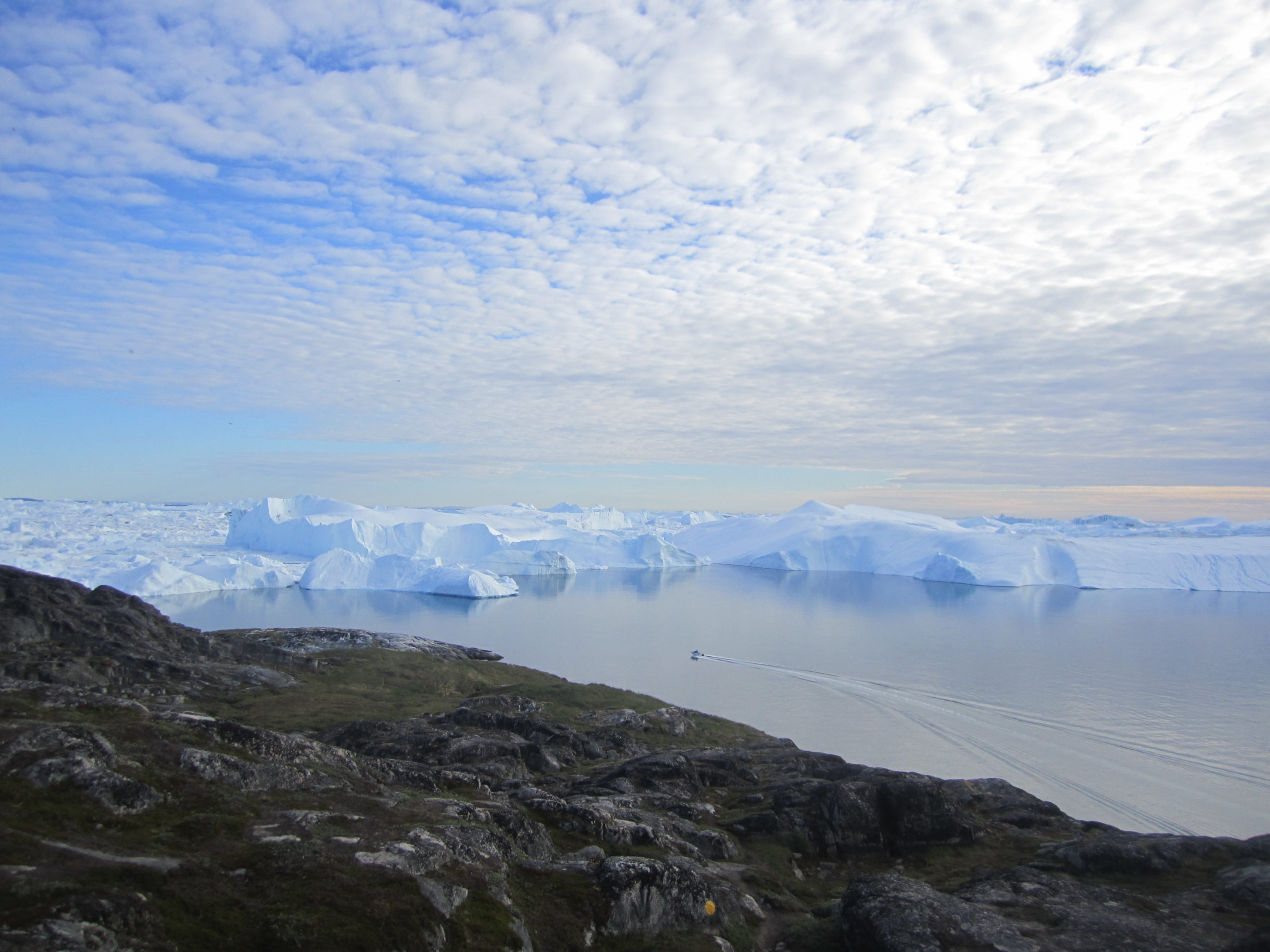
The Jakobshavn Glacier, Greenland.
Credit: Thomas Overly.
The recently released IPCC Sixth Assessment Report predicts faster warming of Earth's atmosphere and oceans compared to previous assessments. Now, new research shows how the new generation of climate models used in the assessment differ from earlier models in their prediction of the impact on the Antarctic and Greenland ice sheets on sea level rise.
The new study predicts that, by 2100, additional melting of the Antarctic ice sheet will be countered by an increase in snowfall, associated with a warmer Polar atmosphere, resulting in little additional contribution of Antarctica to sea level rise compared to previous models. The Greenland ice sheet, however, will see more melting than previously predicted and contribute to higher sea level rise by the end of the century, according to new models.
Using modern methods to calculate projected changes to sea levels, researchers discovered that the two ice sheets of Greenland and Antarctica respond differently, reflecting their very distinct local climates.
The new research is based on the new generation of climate models which are used in the newly published Intergovernmental Panel on Climate Change (IPCC) Sixth Assessment Report, reviewing scientific, technical, and socio-economic information regarding climate change.
The project brought together over 60 researchers from 44 institutions to produce, for the first time, process-based community projections of the sea level rise from the ice sheets.
The paper was published in AGU's journal Geophysical Research Letters, which publishes high-impact, short-format reports with immediate implications spanning all Earth and space sciences.
Tony Payne, Head of the University of Bristol's School of Geographical Sciences and lead author of the new paper, said the team was trying to establish whether the projected sea level rise from the new generation of climate models was different from the previous generation.
"The new models generally predict more warming than the previous generation, but we wanted to understand what this means for the ice sheets," he said. "The increased warming of the new models results in more melt from the Greenland ice sheet and higher sea level rise by a factor of around 1.5 at 2100."
"There is little change, however, in projected sea level rise from the Antarctic ice sheet. This is because increased mass loss triggered by warmer oceans is countered by mass gain by increased snowfall which is associated with the warmer Polar atmosphere," Payne added.
The recent findings suggest that society should plan for higher sea levels, and match with virtually all previous estimates of sea level rise, in that scientists expect sea levels to continue to rise well beyond 2100, most likely at an accelerating rate.
"Predicting the mass budget of the ice sheets from estimates of global warming is difficult and a great many of the processes involved require further attention," Payne said. "Discovering that warmer climates do not affect Antarctic mass budget, in particular, warrants further examination because this is based on large changes in snowfall and marine melt balancing."
"One of the main things to take away from this, interestingly, is that the response of two ice sheets and what impact global heating has on them is different and depends heavily on their local conditions," Payne added.






